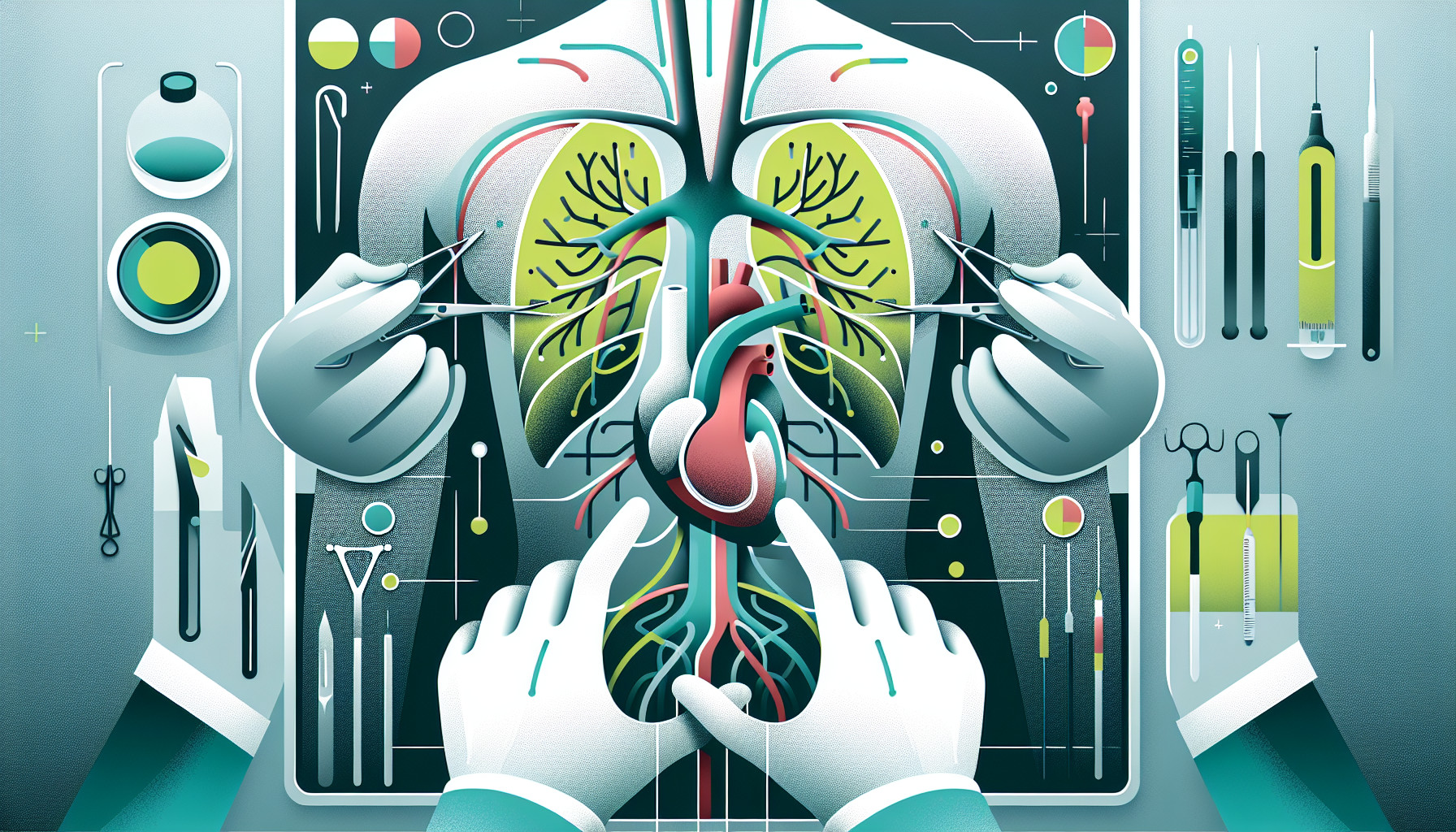Our Summary
This research paper reviews previous studies on the link between body temperature (specifically hypothermia, or low body temperature) and the outcomes of a specific type of surgery: abdominal aortic aneurysm (AAA) repair.
The authors reviewed studies that focus on temperature during or after the surgery, and whether the surgery was performed through open surgery or less invasive endovascular repair (through the blood vessels). They did not include studies on surgeries involving the chest or both the chest and abdomen.
They found eight relevant studies involving 765 patients. The majority of these studies focused on elective (planned in advance) AAA repair, while only a few involved emergency repair.
The results showed that patients who maintained normal body temperature during surgery had a shorter stay in intensive care. On the other hand, hypothermia was associated with higher rates of organ dysfunction, more deaths during hospital stay, and longer hospital stays. In cases of ruptured AAAs, the lowest average body temperature during surgery was recorded in open repair compared to endovascular repair.
However, the researchers emphasize that these results are not definitive, as there are many potential confounding variables (other factors that could influence the results). They highlight the need for standardizing how body temperature is measured and how patients are rewarmed after surgery.
In conclusion, while it is clear that hypothermia can have negative effects on the outcomes of AAA repair, more rigorous research is needed to establish firm guidelines for managing body temperature during and after surgery.
FAQs
- What is the link between body temperature and the outcomes of abdominal aortic aneurysm (AAA) repair?
- How does the type of surgery (open or endovascular repair) affect the body temperature during AAA repair?
- What are the potential negative effects of hypothermia on the outcomes of AAA repair?
Doctor’s Tip
Based on the research findings, a helpful tip a doctor might tell a patient about aortic aneurysm repair is to maintain normal body temperature during and after surgery. This can help reduce the risk of organ dysfunction, complications, and potentially improve the overall outcome of the surgery. Patients should discuss with their healthcare team about the best strategies to maintain normal body temperature during the procedure.
Suitable For
Patients who are typically recommended aortic aneurysm repair include those with aortic aneurysms that have reached a certain size threshold, those experiencing symptoms such as pain or tenderness in the abdomen or back, or those at risk of rupture due to factors such as family history, smoking, high blood pressure, or certain genetic conditions. Additionally, patients with rapidly growing aneurysms or those with complications such as blood clots or infection may also be recommended for repair. Ultimately, the decision to undergo aortic aneurysm repair is based on a combination of factors including the size and location of the aneurysm, the patient’s overall health and medical history, and the potential risks and benefits of surgery.
Timeline
- Before aortic aneurysm repair:
- Patient may experience symptoms such as chest or back pain, shortness of breath, and/or abdominal pain.
- Diagnosis of aortic aneurysm through imaging tests such as CT scans or ultrasounds.
- Consultation with a vascular surgeon to discuss treatment options.
- Preparation for surgery, which may include blood tests, imaging scans, and medication adjustments.
- During aortic aneurysm repair:
- Patient is monitored closely by medical staff.
- Surgery is performed either through open surgery or endovascular repair.
- Body temperature is controlled to prevent hypothermia.
- Repair of the weakened artery wall, typically through the placement of a stent or graft.
- After aortic aneurysm repair:
- Patient is transferred to the intensive care unit for monitoring.
- Recovery process begins, which may include pain management, physical therapy, and monitoring for complications.
- Length of hospital stay varies depending on the type of surgery and individual recovery.
- Follow-up appointments with the vascular surgeon to monitor healing and address any concerns.
What to Ask Your Doctor
Here are some questions a patient should ask their doctor about aortic aneurysm repair:
- What type of procedure do you recommend for my aortic aneurysm repair, open surgery or endovascular repair?
- How will my body temperature be monitored during and after the surgery?
- What steps will be taken to prevent hypothermia during the surgery?
- How will I be rewarmed after the surgery if hypothermia occurs?
- What are the potential risks and complications associated with maintaining normal body temperature during the surgery?
- How will my recovery and outcomes be affected by my body temperature during the surgery?
- Are there any specific guidelines or protocols in place at the hospital for managing body temperature during aortic aneurysm repair surgeries?
- Are there any lifestyle changes or precautions I should take to reduce the risk of hypothermia during and after the surgery?
- What is the expected length of my hospital stay and recovery time based on the chosen procedure and body temperature management?
- Are there any additional resources or support services available to help me prepare for and recover from aortic aneurysm repair surgery?
Reference
Authors: Samoila G, Ford RT, Glasbey JC, Lewis MH, Twine CP, Williams IM. Journal: Ann Vasc Surg. 2017 Jan;38:323-331. doi: 10.1016/j.avsg.2016.05.121. Epub 2016 Aug 13. PMID: 27531090
